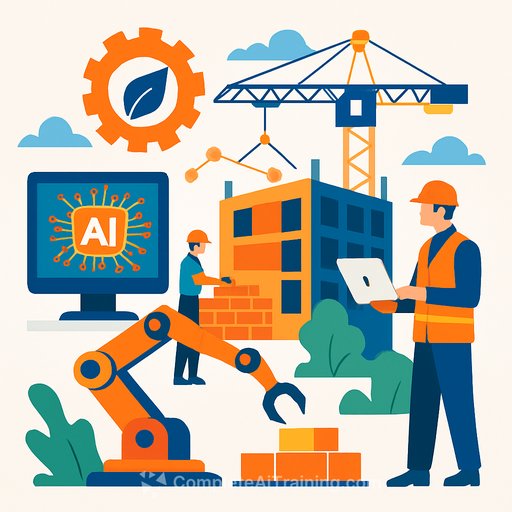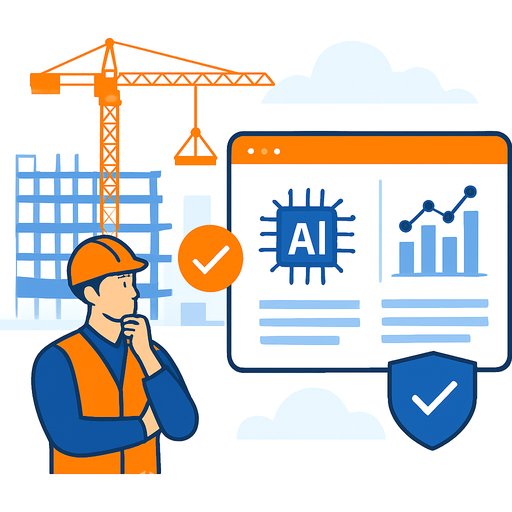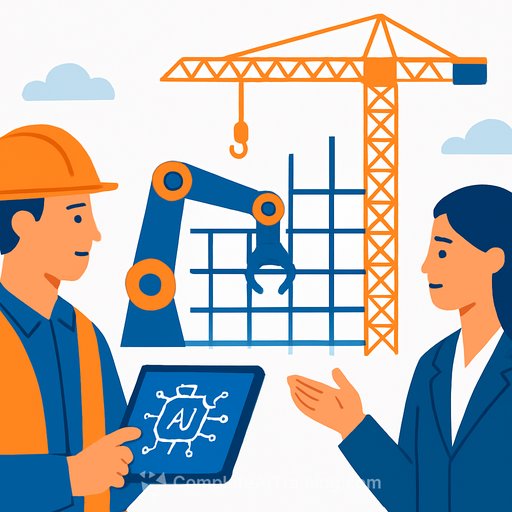The Future of Construction: Embracing Technology
Construction is shifting towards technology-driven methods, with AI, digital twins, and automation reshaping building planning, execution, and monitoring. Manan Shah, Managing Director of MICL Group, highlights this move from traditional workflows to precise, data-led processes. From BIM modeling and rebar-tying machines to drone surveys and mobile-based quality checks, technology is cutting timelines and improving coordination.
These digital systems are not just improving efficiency—they are quietly redefining the core of construction amid evolving urban environments.
Leveraging Technology for Streamlined Planning
At MICL, technology forms the nervous system of projects rather than just an added layer. Building Information Modeling (BIM) lets teams simulate every project detail before site work begins, covering clash detection, 4D scheduling, and cost optimization. This brings engineers, architects, and planners into sync, delivering precision at speed.
Drones provide real-time views beyond the surface. They track site progress, logistics, and topographic changes, improving safety and scheduling accuracy.
Adoption of Precast and Modular Construction
Precast and modular construction are gaining momentum globally for speed and quality. MICL uses MIVAN aluminium formwork systems to deliver monolithic quality quickly—crucial for high-rise and redevelopment projects where time is tight.
The company is piloting prefabricated utility shafts, bathroom pods, and façade systems. These efforts minimize rework and reduce the carbon footprint, aligning speed with consistency and sustainability.
Integrating IoT for Smart Living
Smart homes at MICL go beyond gadgets—they focus on intuitive living. Building Automation Systems (BAS) integrate HVAC, lighting, security, and energy efficiency.
IoT-based water metering, real-time fire diagnostics, and app-controlled access enhance comfort, safety, and efficiency. Luxury projects will feature AI-enabled concierge systems and predictive maintenance, raising resident experience standards.
Improving Productivity with Technology
Rising costs and labor shortages are realities, but MICL addresses them with process innovation. Real-time ERP dashboards, project management tools, and digital twins help plan ahead, reduce rework, and allocate labor efficiently.
Technologies track rebar, optimize formwork, and control on-site inventory to cut waste and maximize output. Rigorous pre-planning of permissions, civil packages, and supplier coordination often starts before project launches, enabling deliveries up to 19 months ahead of schedule.
Commitment to Sustainability
Sustainability is embedded from the blueprint stage. MICL designs buildings for thermal efficiency using façade studies and window-to-wall ratios that reduce energy demand.
The company uses low-VOC paints, fly ash cement, and aerated blocks to lower embodied energy. Features like rainwater harvesting, grey water recycling, solar backup, and sensor-based lighting are standard. Pilots with green concrete mixes and carbon footprint audits further this commitment.
Embracing Automation and Robotics
Automation is foundational at MICL. Rebar-tying machines, concrete pouring monitors, and slab cycle automation reduce manual fatigue and improve consistency.
Factory-finished MEP modules cut on-site delays, while drones perform aerial inspections to catch issues early. Robotic plastering and 3D concrete printing are being evaluated for complex designs, moving the focus from reactive fixes to proactive precision.
Exploring Digital Twins and AI
MICL balances tradition with innovation by carefully adopting emerging tools like digital twins and AI-powered project management. These technologies help with project forecasting, quality control, and risk management.
The company believes technology should enhance every aspect of real estate—from design and delivery to community building—supporting quality living environments.
Balancing Tradition and Innovation
Built on generations of engineering excellence, MICL maintains core construction quality and disciplined planning. But true advancement comes from combining these with new design ideas and technology.
The approach is never "old versus new." Traditional structural design and material selection form the backbone, while modern building automation and wellness-focused amenities are layered on. This blend supports MICL’s “sculptural architecture” philosophy.
Technology in Quality Control
Technology plays a key role in maintaining quality and tracking defects. MICL uses mobile site reporting apps for instant defect logging with photos, enabling quick notifications to engineering and quality teams.
Real-time quality audits on tablets ensure every stage meets standards. Data collected feeds centralized dashboards that identify recurring issues, shifting focus from correction to prevention. This approach has improved response times, accountability, safety, and customer satisfaction.
Future Disruptions in Construction Technology
In the next five years, digital twin platforms, AI-driven project management, and advanced prefab methods will significantly impact India’s construction and real estate sectors.
Digital twins will improve design visualization, operations, and lifecycle management—essential for complex urban redevelopment. AI tools will enhance scheduling, risk assessment, and predictive maintenance, reducing delays and costs while enabling responsive customization.
Modular and prefabricated construction will speed delivery and improve quality, especially in cluster redevelopment projects with tight timelines.
MICL is preparing by piloting digital audits, mobile reporting, and real-time tracking to boost quality and transparency. Continuous learning and adopting global best practices ensure technology improves design and customer experience, supporting high-quality living environments.
Your membership also unlocks:






